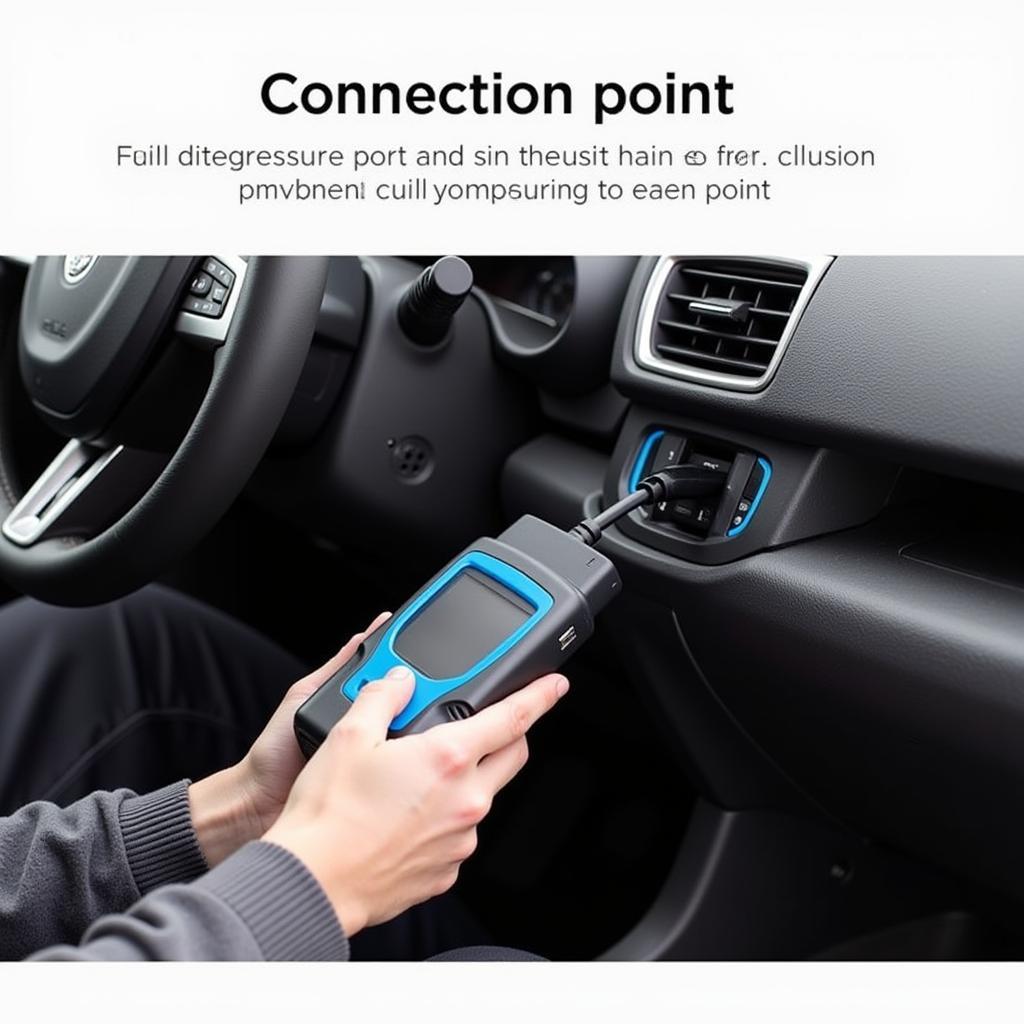The T300 car diagnostic tool is a powerful and affordable device that can help you diagnose and troubleshoot car problems. But have you ever wondered how it actually works its magic under the hood? In this article, we’ll take an in-depth look at the inner workings of the T300 and explore how it communicates with your vehicle’s onboard computer to provide valuable insights into its health.
Understanding the Basics of Car Diagnostic Tools
Before we delve into the specifics of the T300, let’s briefly discuss the fundamentals of car diagnostic tools. Your car is equipped with an onboard computer, also known as an Engine Control Unit (ECU), which acts as its brain. The ECU continuously monitors various systems and sensors, collecting data on engine performance, emissions, transmission behavior, and more.
Car diagnostic tools like the T300 serve as a bridge between this complex electronic system and the user, usually a car owner, mechanic, or technician. They enable you to tap into the wealth of information stored in the ECU, allowing you to:
- Read and understand diagnostic trouble codes (DTCs): These codes, often displayed as a combination of letters and numbers, indicate specific areas where the ECU has detected a malfunction.
- View live data streams: This feature provides real-time information from various sensors, offering insights into how your engine and other components are performing at any given moment.
- Perform specific functions: Depending on the tool and vehicle model, you might be able to use it to reset maintenance lights, activate components for testing, and even program keys.
The T300: Your Gateway to Automotive Diagnostics
The T300 stands out as a user-friendly and versatile diagnostic tool, particularly popular for its compatibility with a wide range of vehicle makes and models. So, how does the T300 work its magic?
1. Connecting to Your Vehicle
The T300 typically connects to your vehicle through the OBD-II port, a standardized 16-pin connector usually located under the dashboard on the driver’s side.
 connecting-t300-to-obd2-port
connecting-t300-to-obd2-port
2. Establishing Communication
Once connected, the T300 communicates with the vehicle’s ECU using a standardized language called OBD-II (On-Board Diagnostics, second generation). This protocol ensures compatibility across different vehicle makes and models, making the T300 a versatile choice.
3. Retrieving and Displaying Data
Upon establishing communication, the T300 can perform several tasks based on user input:
- Reading DTCs: The tool queries the ECU for any stored trouble codes and presents them in a clear format on its display screen.
- Accessing Live Data: The T300 can display real-time sensor readings, allowing you to monitor parameters like engine RPM, coolant temperature, oxygen sensor voltage, and more. This data helps diagnose intermittent problems or verify sensor functionality.
- Performing Actuation Tests: Depending on the vehicle’s capabilities, the T300 might allow you to activate certain components, such as turning the fuel pump on/off or cycling the EVAP system, for diagnostic purposes.
4. Interpreting the Results
The information provided by the T300 is only as valuable as your ability to interpret it. While the tool presents data clearly, a basic understanding of car mechanics and the ability to look up DTC definitions are essential for effective troubleshooting.
Advantages of Using the T300
The T300 offers a compelling combination of features that make it a popular choice for DIY enthusiasts and professionals alike:
- Affordability: Compared to high-end professional-grade tools, the T300 provides exceptional value for its price, making it accessible to a broader audience.
- Wide Compatibility: Its support for the OBD-II protocol ensures compatibility with a vast majority of vehicles manufactured after 1996, both domestic and foreign makes.
- User-Friendly Interface: The T300’s intuitive menu system and clear display make it easy to navigate and understand, even for beginners.
- Portable and Compact: Its compact design allows you to carry it easily and use it in tight spaces, making it suitable for both home garages and professional workshops.
 mechanic-using-t300-for-diagnostics
mechanic-using-t300-for-diagnostics
Conclusion
The T300 car diagnostic tool provides a user-friendly and affordable way to delve into your car’s inner workings. By understanding how it communicates with the vehicle’s ECU and retrieves vital information, you can unlock a new level of control over your car’s maintenance and repair.
While the T300 empowers you with valuable data, remember that effective troubleshooting still relies on your ability to interpret the results and apply your mechanical knowledge.
FAQs
1. Can the T300 diagnose all car problems?
While the T300 can read and display a wide range of diagnostic trouble codes, it’s important to remember that it’s still a tool. It cannot diagnose every single car problem, especially mechanical issues not directly related to the ECU’s monitoring capabilities.
2. Will using the T300 void my car’s warranty?
No, using the T300 or any other OBD-II diagnostic tool will not void your car’s warranty. In fact, access to such tools is protected by law.
3. Can I update the T300’s software?
Yes, the T300 often comes with the option to update its software to ensure compatibility with newer vehicle models or access additional features. You can typically find update instructions and software downloads on the manufacturer’s website.
Need further assistance?
Contact our team of car diagnostic experts 24/7 via WhatsApp: +1(641)206-8880, or Email: [email protected].

Leave a Reply